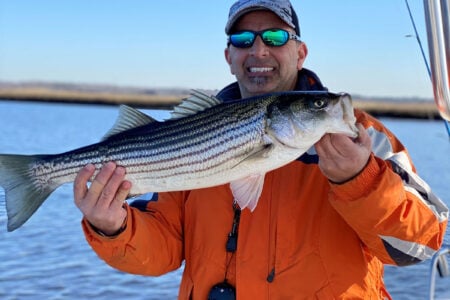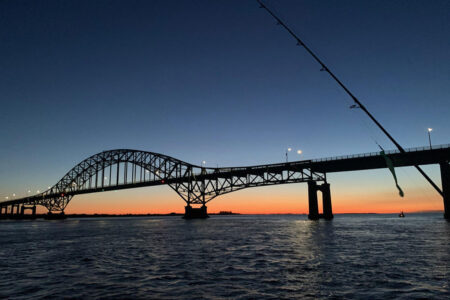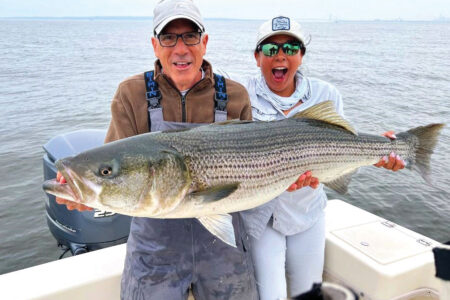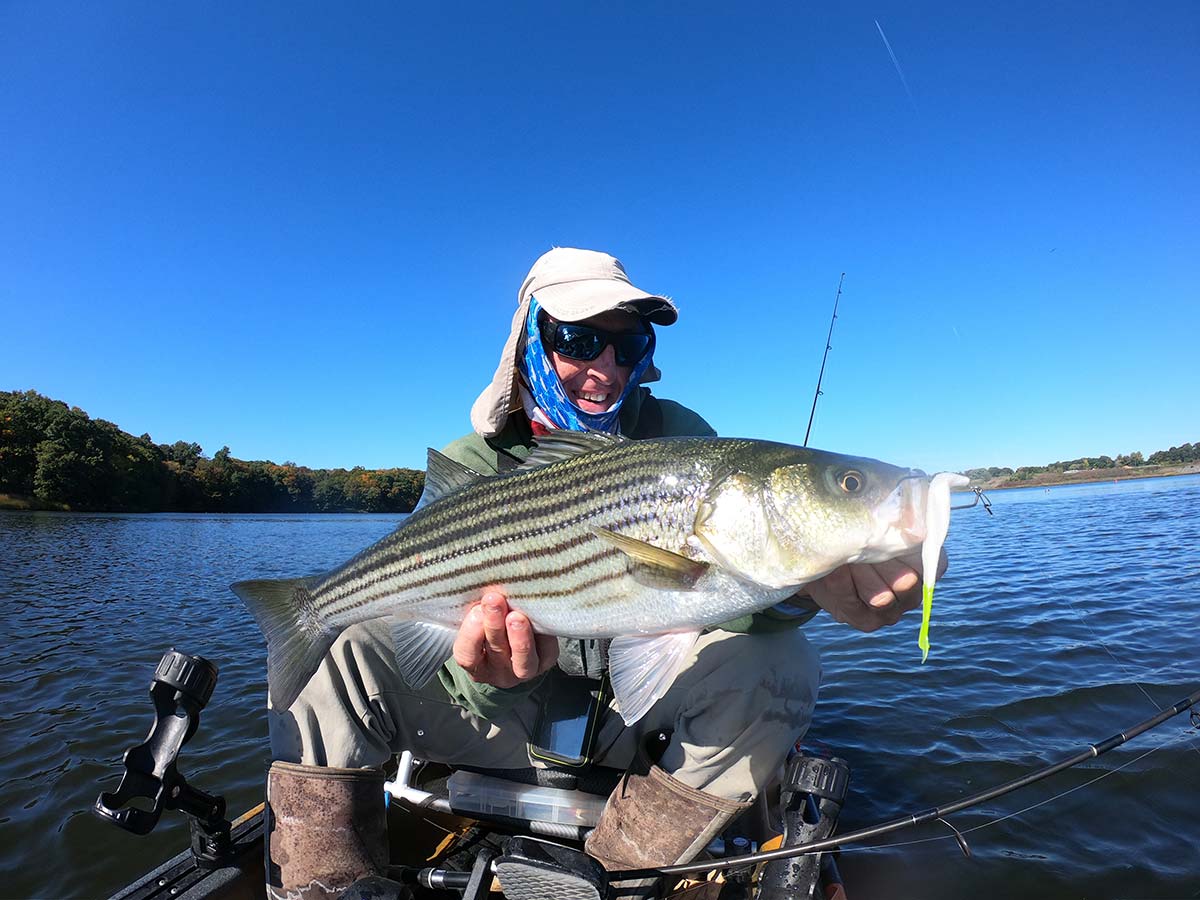
Your guide to soft plastics for spring stripers
April delivers the first migrating stripers of the year and most of the cabin-fever-stricken saltwater fishermen will be hot on their trail. Soft plastics will dominate their lure choices since these lures are the most proven and effective fish catchers in the early going. With a myriad of soft plastic choices to choose from, fishermen will have to determine the best lure to use in the situation they are fishing.
Paddled & Forked
Most fishermen have their own favorite brand of paddle tails, and to be quite honest, I’ve found that most catch with just about equal effectiveness in the early going. These can include H&H Cocahoe Minnows, NLBN paddletails, Gulp Paddleshads and many more brands. What they all share in common is a paddle tail that swims with a back and forth motion that often drives early season stripers crazy. Most of these have to be mounted on a jighead.
Fork-tailed plastics are fish-like bodies that have a fork tail. These include brands such as Zoom Fluke, Lunker City Finesse Fish and various other brands. These can be mounted on a jighead or even fished weightless. These lures swim more with more of a darting motion caused by sporadic pulls of the rod tip on a slow retrieve.
In my home waters of Rhode Island, an interesting situation arises when choosing the best soft plastics based on location. The paddle tail lures will work best, by far, along the oceanfront in the early going. In Narragansett Bay, another hotspot for schoolies in the spring, the fork tailed flukes will be the best producers. Don’t ask me why, but years of observation have proven this to be the case. I’m guessing it has to do with the sparse bait that tends to stay along the bottom in the cold water. In both instances, light colored lures like a bone, white, glow or albino are the best colors. If you are looking for a lure that might give you an extra spark, try one of these lures with a chartreuse tail.
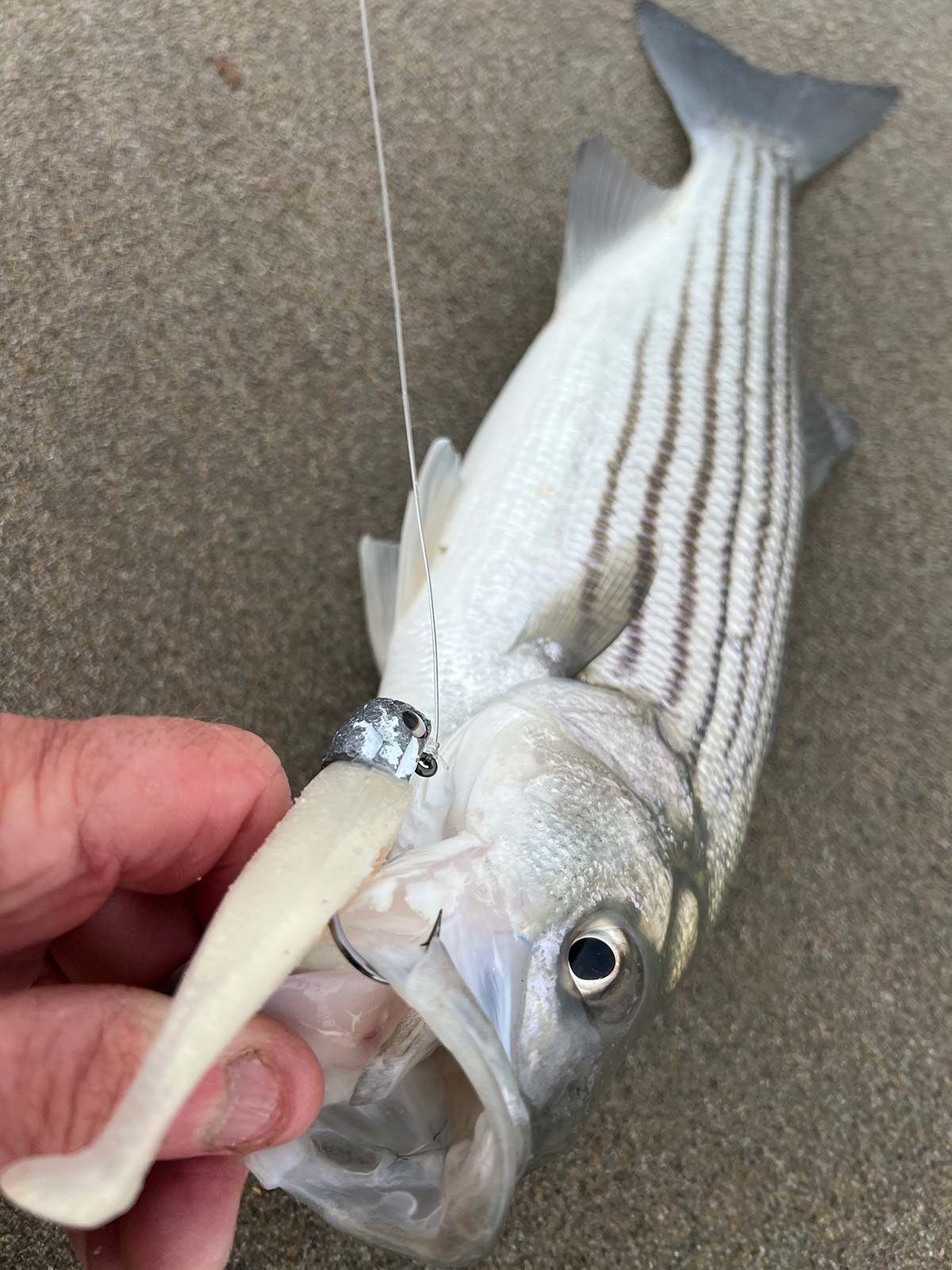
Skinny Dipping
Skinny plastics can be defined as long skinny lures such as Slug-Go’s, Albie Snax or Hogy’s . These are typically rigged weightless on a swimbait hook or a wide gap worm hook. They are fished close to the surface. They swim with a darting motion caused by pulls of the rod tip.
I typically transition to skinny plastics toward the end of April once the water begins to warm and the fish become more active. These are especially effective in the shallow waters of Narragansett Bay where water temperatures run five or six degrees warmer than the oceanfront. I especially like the 7-½-inch white Slug-Go rigged with a Hogy 5/0 swimbait hook. I have also rigged these with wide gap worm hooks in the past. The main drawback to using skinny plastic is their lack of casting distance especially when throwing into the wind. Some fishermen will opt for a weighted swimbait hook under windy conditions but realize the added weight cuts down on the natural swimming action of the lure. I tend to use the Slug-Go with a wind at my back or when fishing from the kayak in Narragansett Bay. This is a bigger lure than the plastics mentioned above, and it often attracts larger fish of slot size or even over slots.
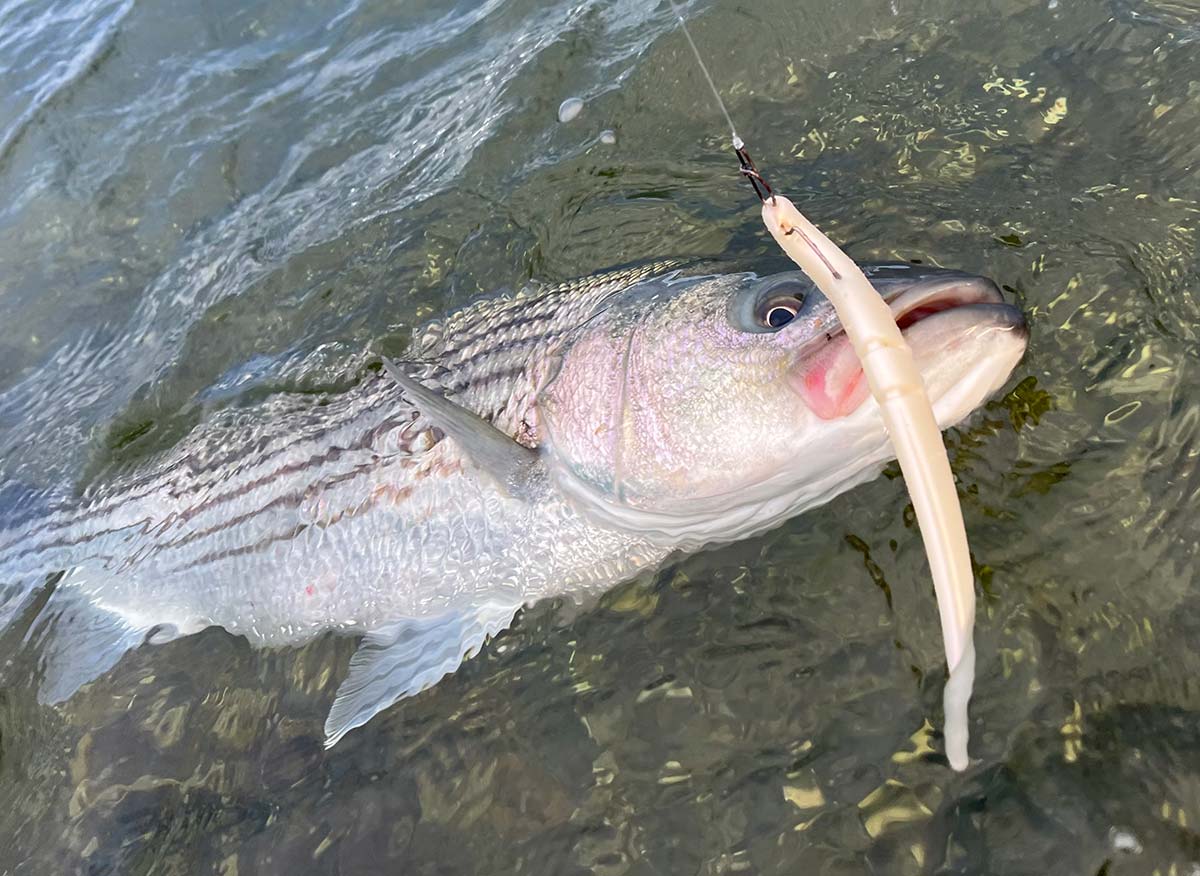
Heads & Tails
Your jighead will be an important aspect to your soft plastic set up. I like to use the smallest jighead I can to get the lure out a good distance into the water. In most cases I’ll be using light tackle so I tend to use a half-ounce jighead, give or take a quarter-ounce. Of course, if you have a howling wind in your face or a rough surf, you might have to go up to a 1-ounce jighead. I will rarely use a jighead over an ounce in the month of April. Also, half-ounce jigheads fit well with small paddle tails and flukes that are about 3 to 4 inches in length, the most effective sizes overall.
Grub tails were originally a freshwater bass lure, but they have migrated into the salt and fit in well for striped bass. These tails such as a Bass Pro Triple Ripple tail (my personal favorite), are mostly fished as a trailer on a bucktail jig though they can also be threaded onto a jighead and fished alone. Don’t underestimate the allure of the classic bucktail jig. I use 3-inch curly tails on jigs of a quarter to a half-ounce while I will use 4-inch tails on jigs over ¾ ounce. In my opinion, white is the only color you will need.
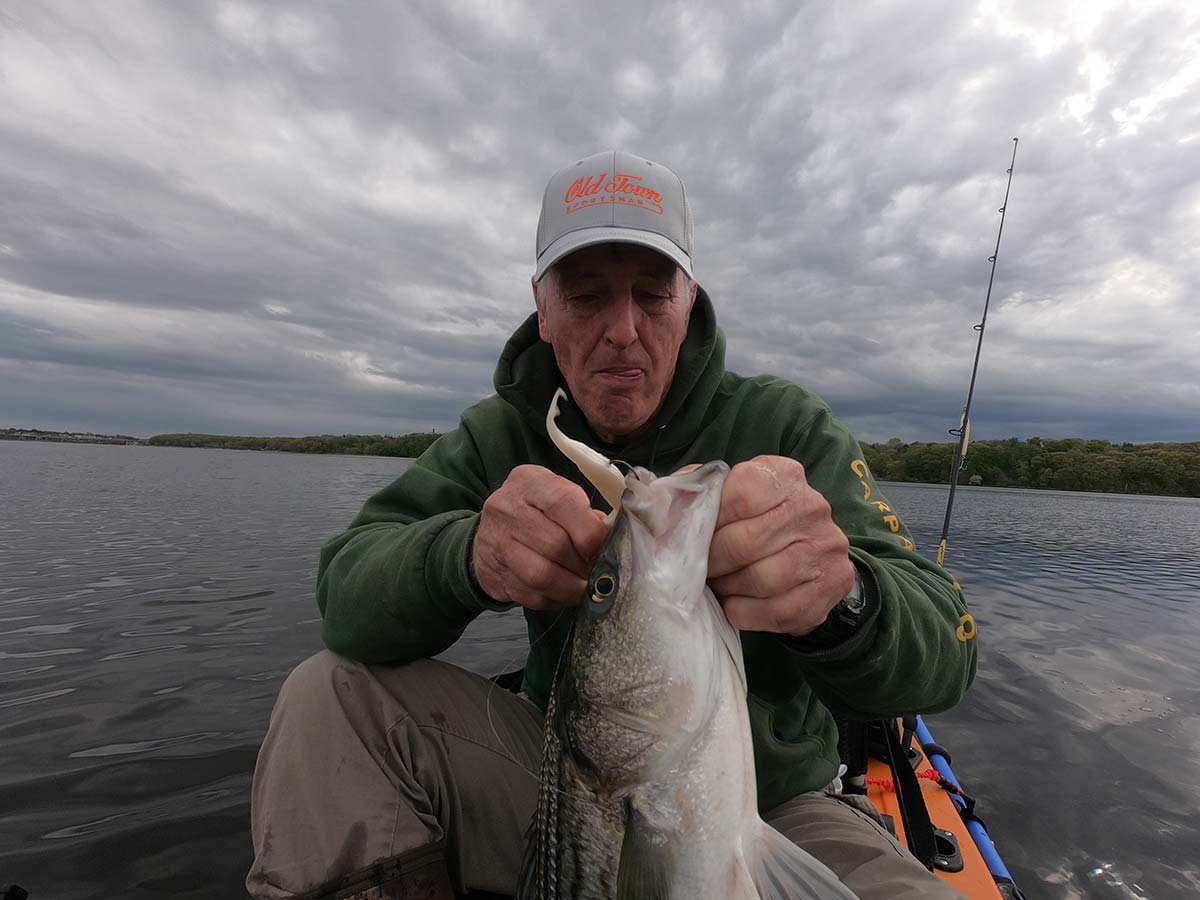
Crib Notes
There are always exceptions to the situations mentioned above. Paddletail lures and flukes are most effective when fished off the bottom, worked with a jigging motion. However, in shallow, rocky waters they might be more effective fished behind a wooden egg float. In that case the jig should be tied to a 24- to 30-inch monofilament leader. This float/jig combo is best fished in rough, shallow water and is simply retrieved with no rod tip action. Waves and turbulence will impart all the action the lure needs.
Another little secret technique I employ is the use of an unweighted fluke rigged with a swimbait hook. I like the Fin-S Fish or a Zoom Super Fluke in the 5-inch length for this method. I’ll rig these unweighted with a swimbait hook or a wide gap worm hook. This is one of my “killers” from the kayak in late-April and early-May. This is extremely effective when trolled slowly from my pedal kayak in Narragansett Bay. I like to work shallow water right near channel drop-offs. I catch a lot of hefty schoolies and even slots in water under 6 feet. This even works well when casting from the kayak and retrieving with snaps of the rod tip while slowly retrieving, similar to the way you would fish a Slug-Go.
Early season striper fishing will be dominated by soft plastics. There are choices here, and the location and conditions, the situations you are fishing will often dictate your best choice of soft plastics. Most of my suggestions mentioned above are high percentage strategies. However, realize that like any other type of fishing with artificials, you still might have to experiment with different soft plastic types, sizes, jigheads and colors to find an effective lure when the fish are not hitting. The common thread here, is that soft plastics, overall, are your most effective choices for stripers of all sizes in April and early May, whether you are fishing from boat, shore or kayak.

